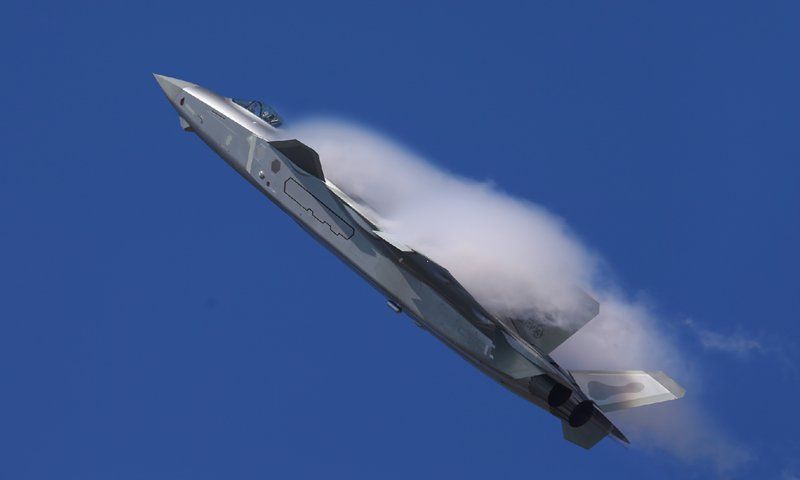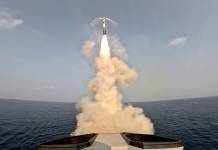The Chinese PLA Central Theater Command Air Force simulated a dogfight in which a highly experienced pilot was shot down by an artificial intelligence (AI)-driven aircraft.
- At €7.8B, Why Indian Rafale Jets Are ‘Double The Cost’ Than Egyptian Rafales?
- Why Did Netizens ‘Mock’ Nigeria For Importing JF-17 Fighter Jets From Pakistan?
China’s state media Global Times cited a report by PLA Daily, Army’s official newsletter, on the simulation exercise. It does not mention which aircraft was used in this exercise though.
There has been an increasing application of artificial intelligence (AI) and machine learning in military combat training with major powers including the US, China, and Russia joining the race.

A mock combat exercise was held in which AI-enabled opponents outperformed many of the PLA Air Force pilots. According to the GT report, China has been investing heavily in AI and machine learning. This concept is now taking shape in the country’s military training as well.
The AI-based aerial combat training simulator was reportedly developed by the PLA brigade cited above along with research institutes.
US AlphaDogfight Trials
China’s growing interest in AI dogfights may stem from a similar exercise conducted by the US Defense Advanced Research Projects Agency (DARPA) last year, known as AlphaDogfight Trials.
DARPA’S event was a three-day competition “designed to demonstrate advanced algorithms capable of performing simulated, within-visual-range air combat maneuvering – commonly known as a dogfight,” as per its website.
AI-version of US F-16 Viper fighter jets fought against real F-16 pilots in simulated air-to-air combat where a graduate of the US Air Force Weapons School’s F-16 Weapons Instructor Course was beaten five times in a row by an AI-driven pilot, as reported by The Drive.
The trials were a part of DARPA’s Air Combat Evolution (ACE) program which seeks to “automate air-to-air combat and build human trust in AI as a step toward improved human-machine teaming”.
China Making Optimum Use Of AI
Du Jianfeng, the commander of the PLA brigade, was quoted as saying, “The AI has shown adept flight control skills and errorless tactical decisions, making it a valuable opponent to hone our capabilities.”
The PLA Daily said that “simulated training can boost training efficiency, save costs and lower flight risks, and with the rapid development of technology, it has become a common goal for major military powers around the world to take advantage of training simulations”.
The Chinese pilots involved in the simulator training have shown confidence in the AI technology, calling it “a solid support in boosting pilots’ combat capabilities”.
Sharing the details of his combat with an AI-powered simulator, Fang Guoyu, the group leader of the aviation brigade taking part in these trials, noted how the AI gathers data from each training session with the pilots and upgrades its moves from the things learned.
“At first, it was not difficult to win against the AI. But by studying data, each engagement became a chance for it to improve,” Fang said, who had championed the machine simulator earlier.
Is America Lagging Behind?
It remains to be seen whether the outcomes of AI-enabled trials will produce similar results in real-time air-to-air combat and how this technological innovation can give a boost to the development of unmanned combat aerial vehicles (UCAV).
Yang Wei, the chief designer of China’s J-20 stealth fighter jet, has previously commented on the possibility of the next-generation fighter jets featuring AI to aid pilots in making accurate decisions when time is not on their side.
Meanwhile, the US Air Force is moving ahead with its Skyborg program, which intends to use AI-driven systems in the development of next-generation drones and possibly manned aircraft in near future.
Accepting China’s dominance as an AI leader in some applications, the US government’s National Security Commission on Artificial Intelligence raised concern on how “America is not prepared to defend or compete in the AI era”, as reported in The Drive.
Read More
- WATCH: Russian Su-30 Fighter Forces F-35 Stealth Jets To Retreat In Their ‘First-Ever Encounter’
- Despite World’s Biggest Navy, Why China Will Struggle To Match Indian Submarines In The Indo-Pacific?





